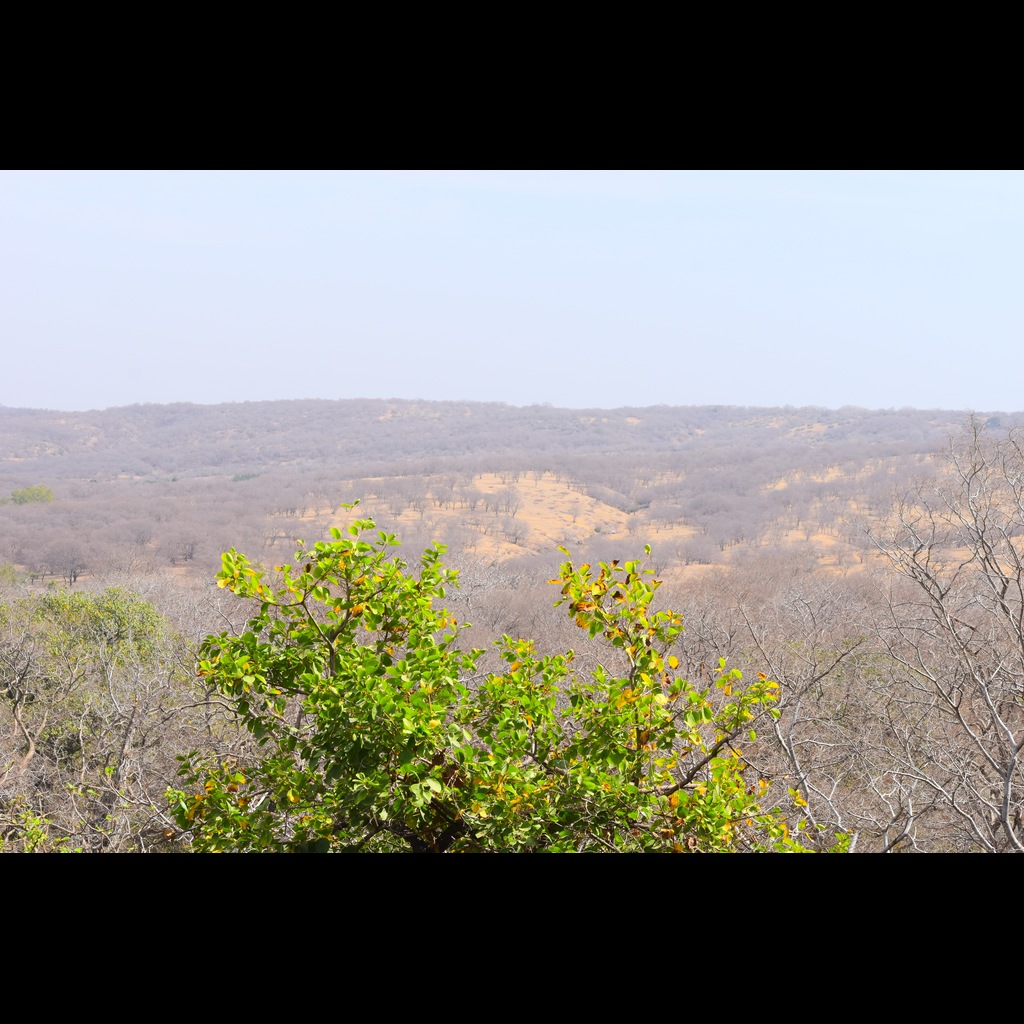
Ranthambore
Nestled at the crossroads of natural beauty and royal legacy, Ranthambore is one of India’s most famous wildlife destinations, known primarily for the Ranthambore National Park — home to the majestic Royal Bengal Tigers.
Located near Sawai Madhopur in Rajasthan, this destination beautifully blends ancient history, dense forests, serene lakes, and royal ruins. Once the private hunting grounds of the Maharajas of Jaipur, Ranthambore today stands as a symbol of India’s successful wildlife conservation efforts, offering an unforgettable experience for nature lovers, photographers, and history enthusiasts alike.
Geography and Overview
Ranthambore lies in the southeastern region of Rajasthan, at the foothills of the Aravalli and Vindhya ranges. Spread over 1,334 square kilometers, the region is a mesmerizing mix of deciduous forests, grassy meadows, rocky hills, and serene water bodies. The Padam Talao, Malik Talao, and Raj Bagh Talao are among the most scenic lakes inside the park, often reflecting tigers, deer, and migratory birds in their calm waters. The Banas River and Chambal River mark the park’s boundaries, enriching the ecosystem with water and biodiversity.
History and Heritage
Ranthambore’s history is as majestic as its landscape. The region gets its name from the Ranthambore Fort, a UNESCO World Heritage Site built around the 10th century CE by the Chauhan rulers. The fort stood as a stronghold during the rule of Raja Hammir Dev Chauhan, resisting invasions from the Delhi Sultanate. Over centuries, Ranthambore became a prized territory for its strategic location and dense forests. Later, under Mughal and Jaipur royal rule, it transformed into a royal hunting reserve. In 1955, the area was declared a wildlife sanctuary, and in 1973, it became part of Project Tiger, marking a major milestone in tiger conservation.
Culture and Traditions
Although Ranthambore is primarily known for its wildlife, the local culture reflects the vibrant Rajasthani spirit. The nearby town of Sawai Madhopur showcases a blend of Rajput and tribal traditions, with colorful attire, folk dances like Ghoomar and Kalbelia, and music played on traditional instruments like the ektara and dholak. The locals celebrate festivals such as Ganesh Chaturthi, Diwali, and Ranthambore Festival, where art, music, and conservation themes come together. The Ganesh Temple inside Ranthambore Fort is a major pilgrimage site, drawing thousands of devotees throughout the year.
Best time to visit Ranthambore
The best time to visit Ranthambore is from October to April.
October to December: Pleasant weather, ideal for sightseeing and safaris.
January to March: Excellent time for wildlife photography, with increased tiger activity.
April to June: Hot but best for tiger sightings as animals gather around waterholes.
Note: The park remains closed from July to September during the monsoon season.
Top Attractions in Ranthambore
Ranthambore National Park—The crown jewel of Rajasthan’s wildlife circuit, known for tiger sightings and breathtaking landscapes.
Ranthambore Fort – A UNESCO site perched atop a hill, offering panoramic views and rich medieval architecture.
Padam Talao—The largest lake inside the park, famous for its lotus blooms and sightings of tigers and birds.
Raj Bagh Ruins—Ancient royal structures now intertwined with nature, creating a magical backdrop for photography.
Malik Talao—A peaceful lake frequented by crocodiles and migratory birds.
Jogi Mahal—Once a royal guesthouse, now a landmark near Padam Talao.
Trinetra Ganesh Temple—One of the oldest Ganesh temples in India, located inside the fort.
Kachida Valley—A scenic area known for leopard and sloth bear sightings.
Surwal Lake—A serene seasonal lake popular among birdwatchers.
Ranthambore School of Art—A local initiative promoting wildlife conservation through art and paintings.
Things to Do in Ranthambore
Tiger Safari: Embark on a thrilling jeep or canter safari to spot tigers, leopards, and other wildlife in their natural habitat.
Explore Ranthambore Fort: Climb the fort’s ancient walls and enjoy panoramic views of the forest below.
Bird Watching: Visit lakes like Surwal and Padam Talao to see flamingos, kingfishers, herons, and peacocks.
Seek Blessings at Trinetra Ganesh Temple: Attend the daily aarti and experience spiritual serenity.
Visit Ranthambore School of Art: Interact with local artists and buy wildlife-inspired paintings.
Photography Tour: Capture tigers, ancient ruins, misty lakes, and the golden light of the Aravalli hills.
Village Safari: Experience local life through guided tours of Sawai Madhopur’s villages, showcasing crafts and Rajasthani hospitality.
Attend Ranthambore Festival (January): Enjoy music, art, and wildlife film screenings celebrating conservation and culture.
How to Reach Ranthambore?
BY ROAD
Regular buses and private taxis connect Ranthambore with Jaipur, Kota, and Bharatpur via NH52.
BY TRAIN
Sawai Madhopur Railway Station (11 km) is well connected to Delhi, Jaipur, and Mumbai.
BY AIR
The nearest airport is Jaipur International Airport (180 km), with taxis and buses available to Ranthambore.
Top Tourist Attractions in Ranthambore
Ranthambore, located in Rajasthan, is renowned for its wildlife sanctuary, historic forts, and scenic landscapes. Famous for attractions like the Ranthambore National Park, Ranthambore Fort, Padam Talao, and Surwal Lake, it attracts wildlife enthusiasts, nature photographers, and adventure travelers. The top tourist attractions in Ranthambore offer a captivating blend of rich biodiversity, historic heritage, and thrilling safari experiences.

Kausani
Lorem ipsum dolor sit amet, consectetur adipiscing elit. Ut elit tellus, luctus nec ullamcorper mattis, pulvinar dapibus leo….. Read More

Kausani
Lorem ipsum dolor sit amet, consectetur adipiscing elit. Ut elit tellus, luctus nec ullamcorper mattis, pulvinar dapibus leo….. Read More

Kausani
Lorem ipsum dolor sit amet, consectetur adipiscing elit. Ut elit tellus, luctus nec ullamcorper mattis, pulvinar dapibus leo….. Read More

Kausani
Lorem ipsum dolor sit amet, consectetur adipiscing elit. Ut elit tellus, luctus nec ullamcorper mattis, pulvinar dapibus leo….. Read More

Kausani
Lorem ipsum dolor sit amet, consectetur adipiscing elit. Ut elit tellus, luctus nec ullamcorper mattis, pulvinar dapibus leo….. Read More

Kausani
Lorem ipsum dolor sit amet, consectetur adipiscing elit. Ut elit tellus, luctus nec ullamcorper mattis, pulvinar dapibus leo….. Read More
Must Vist Places around Ranthambore
The areas surrounding Ranthambore are dotted with historic towns, temples, lakes, and wildlife habitats, making them ideal for heritage tourism, eco-tourism, and leisure trips. Nearby destinations such as Sawai Madhopur, Khandar Fort, Rajasthan villages, and Gagron Fort provide travelers with a mix of scenic beauty, historical exploration, and wildlife adventures. Whether exploring majestic forts, spotting tigers in their natural habitat, or enjoying tranquil lakes, the must-visit places around Ranthambore offer immersive and enriching travel experiences in Rajasthan.







